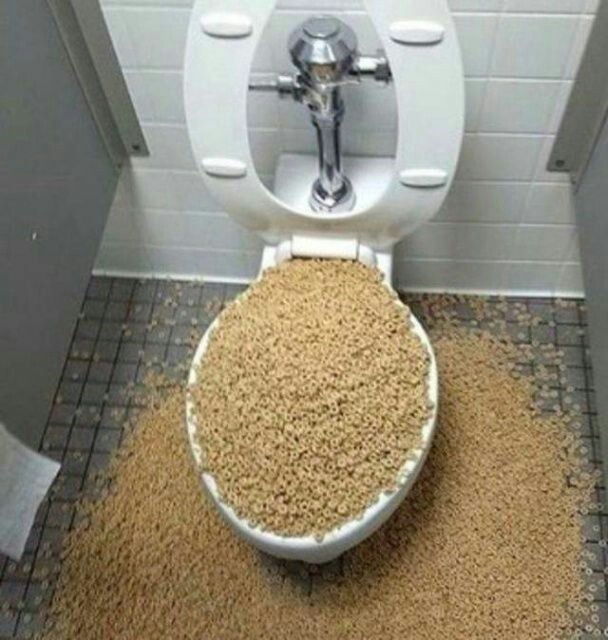Can You to Flush Food in the Toilet?
Can You to Flush Food in the Toilet?
Blog Article
This post following next pertaining to What Can Happen If You Flush Food Down the Toilet? is indeed enlightening. Read it for yourself and see what you think about it.

Intro
Many individuals are typically confronted with the problem of what to do with food waste, especially when it comes to leftovers or scraps. One usual inquiry that arises is whether it's alright to flush food down the bathroom. In this write-up, we'll explore the reasons that individuals could consider purging food, the repercussions of doing so, and alternative methods for proper disposal.
Reasons why individuals could think about flushing food
Absence of recognition
Some individuals might not be aware of the possible damage brought on by flushing food down the toilet. They may incorrectly think that it's a harmless practice.
Ease
Flushing food down the bathroom might feel like a quick and easy solution to getting rid of unwanted scraps, particularly when there's no close-by garbage can available.
Laziness
In many cases, people might merely select to flush food out of sheer laziness, without considering the consequences of their activities.
Repercussions of flushing food down the toilet
Environmental influence
Food waste that winds up in rivers can contribute to pollution and harm water ecological communities. Additionally, the water made use of to flush food can strain water sources.
Pipes concerns
Purging food can bring about blocked pipelines and drains pipes, triggering pricey plumbing repairs and inconveniences.
Kinds of food that need to not be purged
Fibrous foods
Foods with coarse textures such as celery or corn husks can get tangled in pipelines and trigger blockages.
Starchy foods
Starchy foods like pasta and rice can soak up water and swell, leading to obstructions in pipes.
Oils and fats
Greasy foods like bacon or food preparation oils must never ever be purged down the commode as they can solidify and create obstructions.
Appropriate disposal methods for food waste
Utilizing a garbage disposal
For homes furnished with garbage disposals, food scraps can be ground up and flushed via the pipes system. Nevertheless, not all foods are suitable for disposal in this fashion.
Recycling
Particular food product packaging products can be recycled, lowering waste and lessening environmental effect.
Composting
Composting is an environment-friendly means to get rid of food waste. Organic materials can be composted and used to enrich soil for horticulture.
The significance of correct waste monitoring
Decreasing environmental damage
Correct waste monitoring techniques, such as composting and recycling, assistance reduce contamination and protect natural deposits for future generations.
Safeguarding plumbing systems
By avoiding the practice of flushing food down the commode, property owners can avoid expensive plumbing repair services and keep the stability of their plumbing systems.
Conclusion
To conclude, while it might be appealing to purge food down the commode for convenience, it is very important to understand the potential repercussions of this action. By taking on proper waste administration techniques and taking care of food waste properly, people can contribute to healthier plumbing systems and a cleaner setting for all.
FLUSH FOOD DOWN THE TOILET?
FLUSHING FOOD CAN CAUSE BLOCKED DRAINS IN YOUR HOME
All of the plumbing fixtures in your home are connected to the same sewer pipe outside of your home. This outdoor sewer pipe is responsible for transporting all the wastewater from your home to the Council sewer mains. Even small pieces of food that go down the kitchen sink can cause problems for your sewer. It should therefore be obvious that flushing larger bits of food, such as meat, risks a clog in either the toilet itself or the sewer pipes. Flushing greasy food is even more problematic because oil coagulates when it cools, coating the interior lining of your pipes.
THE TOILET IS NOT A BIN
Food isn’t the only thing that people shouldn’t be flushing down the toilet. People use the toilet to dispose of all kinds of things such as tampons, makeup wipes, dental floss, kitty litter and even underwear. Water goes to great lengths to educate residents about the high costs and stress placed on wastewater treatment systems simply from people flushing the wrong stuff down the toilet. It costs taxpayers millions of dollars each year, and homeowners thousands in blocked drain repairs.
FLUSHING FOOD IS A WASTE OF WATER
Flushing food is a waste of our most precious resource - water. In June this year Level 1 water restrictions were introduced to protect water supply from drought conditions. Much of New South Wales continues to be affected by prolonged drought with recent figures revealing up to 97 per cent of the state remains in drought. Depending on whether you have a single or dual flush toilet, every single flush uses between five and 11 litres of water. In the current climate this is a huge amount of water to be wasting on flushing food that should be placed in the bin (or better yet, the compost).
https://www.jabplumbingsolutions.com.au/blog/can-you-flush-food-down-the-toilet

Do you really like reading up on Flushing Food Down the Toilet?? Leave feedback further down. We would be delighted to know your ideas about this write-up. In hopes that you come back again in the future. Sharing is nice. Helping others is fun. Thanks a bunch for your time. Don't forget to come by our site back soon.
Schedule A Service Report this page